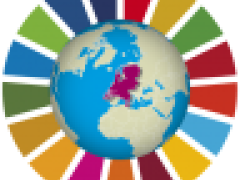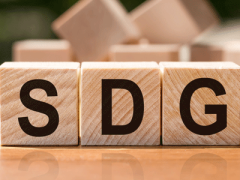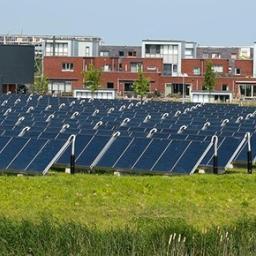New interactive site shows challenges for deltas and explores options for bending the trend
River basins and deltas are hotspot landscapes because they are home to large — and in developing countries growing — populations that depend on the many ecosystem services these systems provide. The infographics website ‘Navigating rivers and deltas towards a sustainable future’ presents current and future challenges for rivers and deltas in more detail and explores various options for bending the trend in increasing pressures caused by socio-economic developments and climate change.
Human interventions
Growing populations and increasing economic activities have increased flood risks, from either rivers or the sea, and are causing serious water pollution, which affects human health and biodiversity in rivers, deltas and coastal seas. Numerous dams and sluices and increased water use have disturbed and often diminished the flow of water and sediment from the rivers to the deltas.
Further deterioration
A further increase in anthropogenic stresses will negatively affect human health and ecological perspectives of river basins and deltas. Climate change, in addition, will alter the discharge regimes of rivers across the world and accelerate sea level rise. The projected trends jeopardise the future of human and ecological systems that depend on healthy and thriving rivers and deltas. In addition, the increased competition for water may increase tensions and conflict between countries sharing the same rivers.
Bending the trend
Under a business-as-usual scenario, achievement of the SDGs is slipping further out of reach — due to both climate change and human interventions. If we change the way we manage our rivers and deltas, and our terrestrial water and groundwater resources, we will be able to bend the trend. The widely accepted SDGs can be used as a shared framework to inspire transformational approaches across scales. Two preliminary tools — one for reducing nutrient emissions and one for reducing flood risks — provide examples to explore more sustainable future pathways and the impact on all 17 SDGs.
Shifting gear and direction
Building a shared language and narrative based on the SDGs, and organising inclusive processes in policy development, plans and projects, on all scales, are key elements in bending the trend and working in the same direction. Linking the short-term COVID-19 recovery agenda to the mid-term sustainability agenda (i.e. the SDGs) and the long-term climate agenda (i.e. COP21) is a win–win strategy, avoiding ‘old school’ projects that will set us back in time instead of creating a better future. Our interactive infographics aim to improve a shared understanding of the complex river and delta systems and support joint explorations in inclusive processes.




